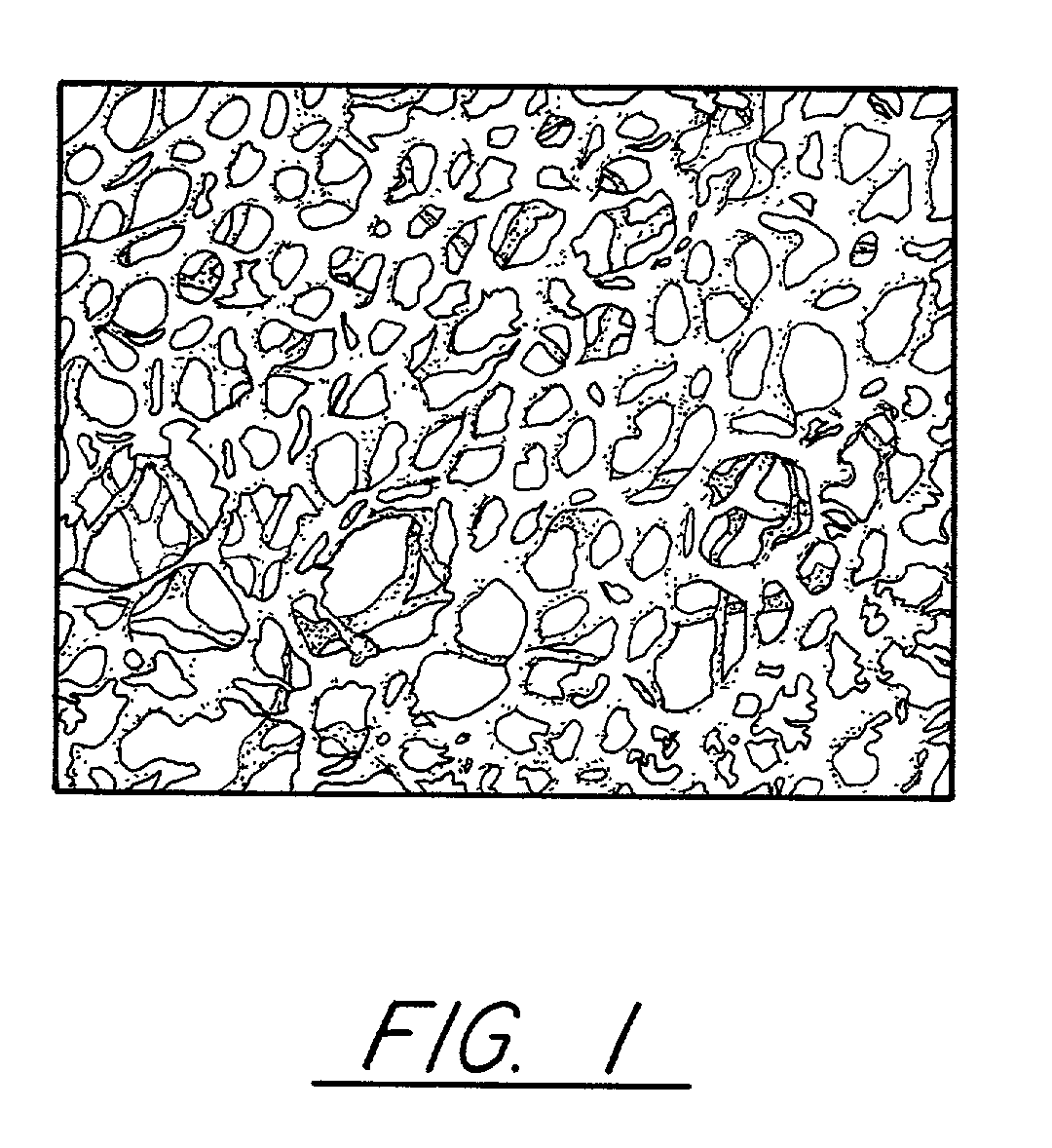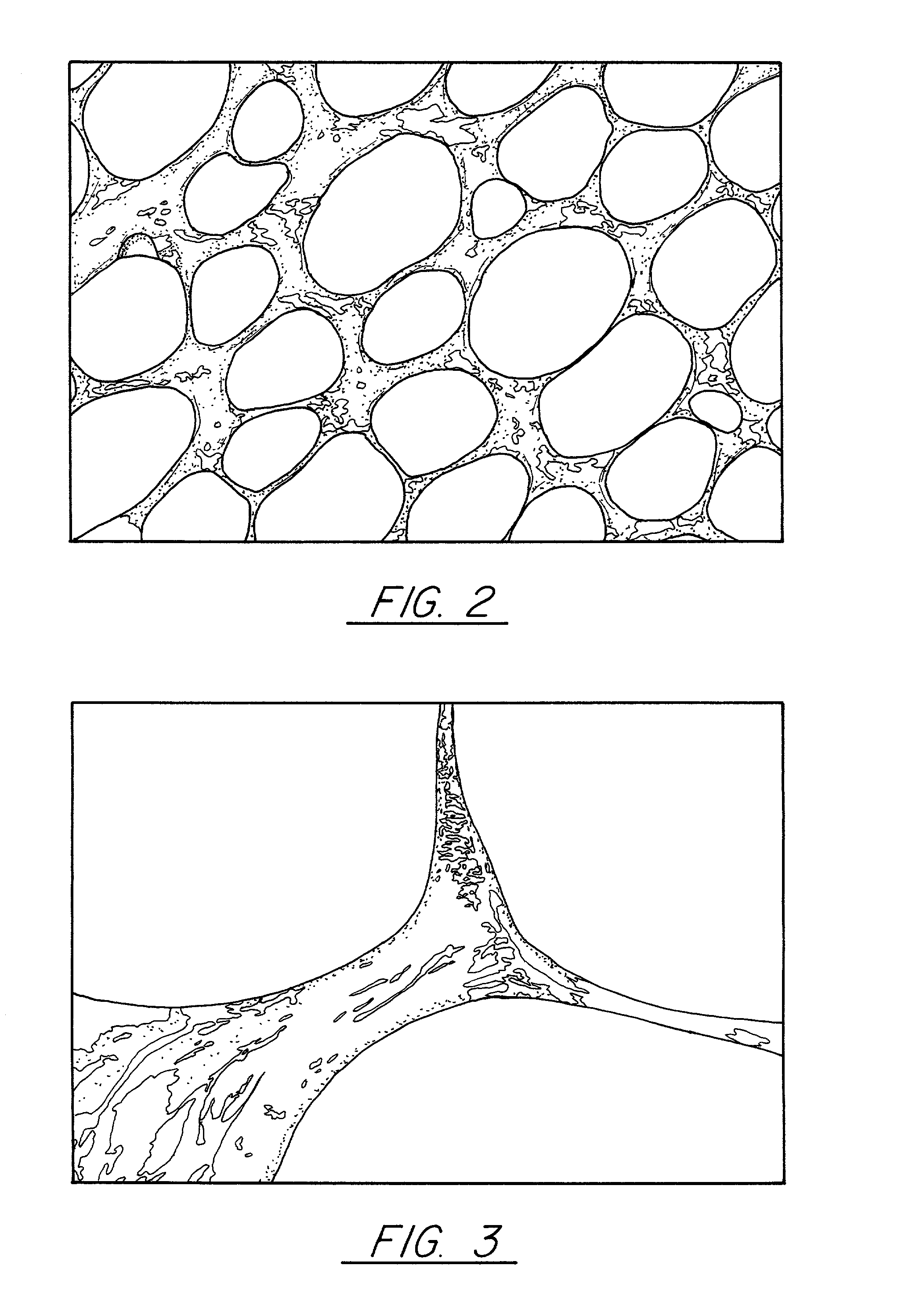Pitch-based carbon foam and composites and use thereof
a carbon foam and composite technology, applied in the field of carbon foam and composites, can solve the problems of low thermal conductivity and low stiffness, time-consuming steps, and high cost, and achieve the effects of increasing cooling effect, high thermal conductivity, and accelerating evaporation
- Summary
- Abstract
- Description
- Claims
- Application Information
AI Technical Summary
Benefits of technology
Problems solved by technology
Method used
Image
Examples
example i
[0056]Pitch powder, granules, or pellets are placed in a mold with the desired final shape of the foam. These pitch materials can be solvated if desired. In this Example Mitsubishi ARA-24 mesophase pitch was utilized. A proper mold release agent or film is applied to the sides of the mold to allow removal of the part. In this case, Boron Nitride spray and Dry Graphite Lubricant were separately used as a mold release agent. If the mold is made from pure aluminum, no mold release agent is necessary since the molten pitch does not wet the aluminum and, thus, will not stick to the mold. Similar mold materials may be found that the pitch does not wet and, thus, they will not need mold release. The sample is evacuated to less than 1 torr and then heated to a temperature approximately 50 to 100° C. above the softening point. In this case where Mitsubishi ARA24 mesophase pitch was used, 300° C. was sufficient. At this point, the vacuum is released to a nitrogen blanket and then a pressure o...
example ii
[0063]An alternative to the method of Example I is to utilize a mold made from aluminum. In this case two molds were used, an aluminum weighing dish and a sectioned soda can. The same process as set forth in Example I is employed except that the final coking temperature was only 630° C., so as to prevent the aluminum from melting.
[0064]FIGS. 12A–C illustrate the ability to utilize complex shaped molds for producing complex shaped foam. In one case, shown in FIG. 12A, the top of a soda can was removed and the remaining can used as a mold. No release agent was utilized. Note that the shape of the resulting part conforms to the shape of the soda can, even after graphitization to 2800° C. This demonstrates the dimensional stability of the foam and the ability to produce near net shaped parts.
[0065]In the second case, as shown in FIGS. 12B and C employing an aluminum weight dish, a very smooth surface was formed on the surface contacting the aluminum. This is directly attributable to the...
example iii
[0067]Pitch derived carbon foam was produced with the method described in Example I. Referring to FIG. 13A the carbon foam 10 was then machined into a block 2″×2″×½″. Two pieces 12 and 14 of a prepeg comprised of Hercules AS4 carbon fibers and ICI Fibirite Polyetheretherkeytone thermoplastic resin also of 2″×2″×½″ size were placed on the top and bottom of the foam sample, and all was placed in a matched graphite mold 16 for compression by graphite plunger 18. The composite sample was heated under an applied pressure of 100 psi to a temperature of 380° C. at a rate of 5 C. / min. The composite was then heated under a pressure of 100 psi to a temperature of 650° C. The foam core sandwich panel generally 20 was then removed from the mold and carbonized under nitrogen to 1050° C. and then graphitized to 2800° C., resulting in a foam with carbon-carbon facesheets bonded to the surface. The composite generally 30 is shown in FIG. 13B.
PUM
| Property | Measurement | Unit |
|---|---|---|
| pressure | aaaaa | aaaaa |
| temperature | aaaaa | aaaaa |
| temperature | aaaaa | aaaaa |
Abstract
Description
Claims
Application Information
 Login to View More
Login to View More - R&D
- Intellectual Property
- Life Sciences
- Materials
- Tech Scout
- Unparalleled Data Quality
- Higher Quality Content
- 60% Fewer Hallucinations
Browse by: Latest US Patents, China's latest patents, Technical Efficacy Thesaurus, Application Domain, Technology Topic, Popular Technical Reports.
© 2025 PatSnap. All rights reserved.Legal|Privacy policy|Modern Slavery Act Transparency Statement|Sitemap|About US| Contact US: help@patsnap.com



